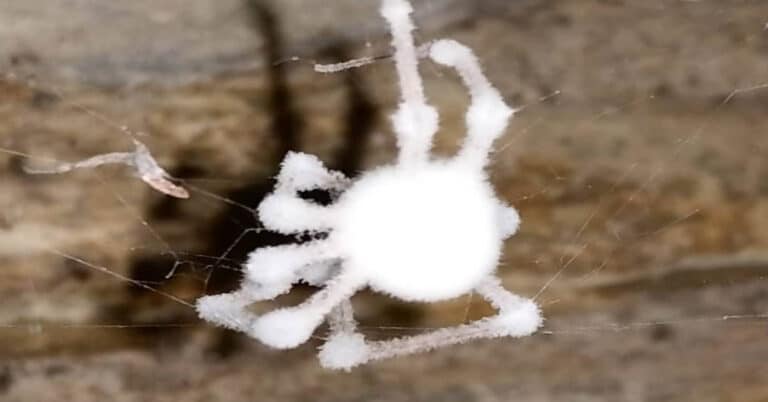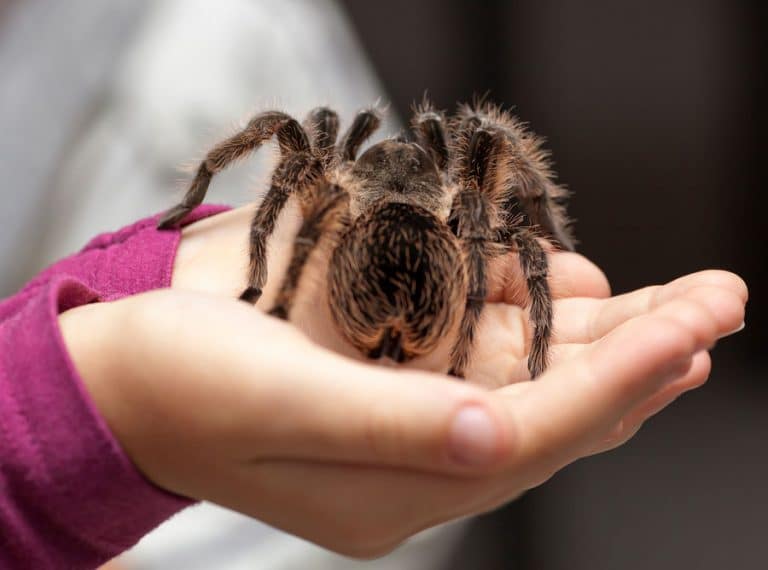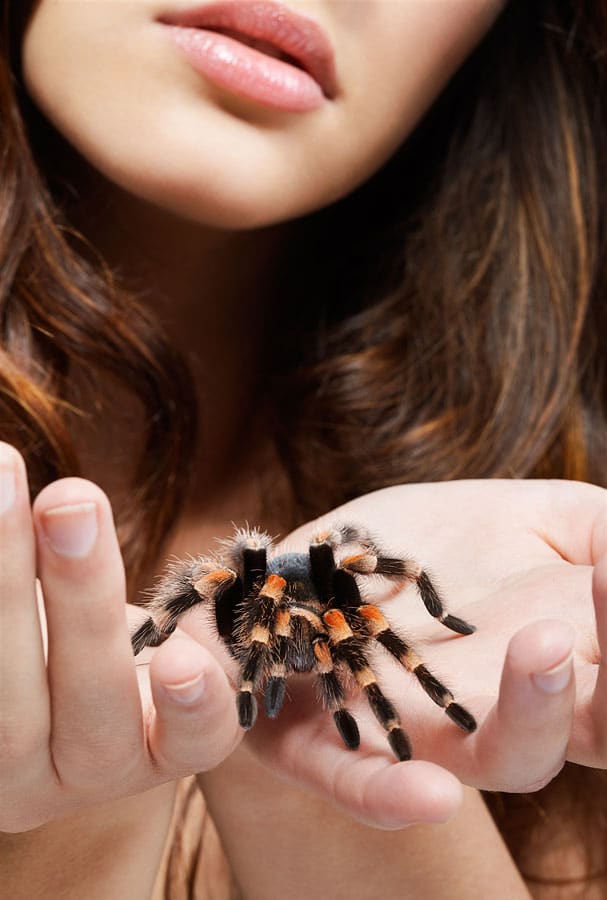Spider Life Cycle
All spiders share the same basic life cycle, from the smallest jumping spider to the biggest tarantula. The main stages of the spider life cycle include – egg, spiderling, and adult stages. Even though each of these three phases of their development is specific, they still differ from species to species.
The interesting thing about the spider world is that the female spider rules the world of spiders. Female spiders are often bigger than male spiders, and they may also be more powerful and dangerous. After mating, certain female spider species may kill and consume the male.
Keep reading this article about the spider life cycle to learn more about these interesting insects that are somehow part of our daily lives.
General Info About Spiders
Before we start discussing the spider life cycle, let’s gain a general understanding of these insects. Did you know that there are 40,000–50,000 species of spiders in the world, making them the largest order of arachnids? Spiders are air-breathing arthropods that come in a variety of sizes and hues, but they all have the following traits in common:
- A segmented body coated in sometimes invisible hair.
- Eight jointed legs in four pairs.
- An exoskeleton that they molt or shed as they develop.
- Spiders have four pairs of eyes.
- Spiders can detect danger because of their highly developed central nervous system.
The majority of spiders have spinnerets at the back of their bodies, which spin silk. These spinnerets are used to construct webs. Spider silk is incredibly resilient and adhesive. They do not have jaws to eat solid food but instead have chelicerae, or fangs that inject venom into their prey, which liquefies their meals.
Spider Life Cycle & Reproduction
As mentioned before, eggs, spiderlings, and adults are the three developmental stages of the spider life cycle. Spiders may produce up to 3,000 eggs, generally in one or more silk sacs, depending on the species.
In spinning sperm webs, adult male spiders discharge sperm on them and then transfer them to palpal bulbs, which resemble syringe-like structures. When the males notice any nearby female spiders, they recognize the species of the female and determine whether or not they are ready for mating.
To prevent the bigger females from consuming the smaller males before conception, males typically engage in courting rituals. These rituals might include touching patterns on a female’s body, gestures, dances, and vibrational patterns on the web, depending on the species.
Following successful courtship, the male uses the reproductive apertures on the underside of its belly to transport sperm from its palpal bulbs to the female body.
Egg — the Embryonic Stage
The first stage of the spider life cycle is the embryonic stage. Female spiders save sperm after mating until they are ready to lay eggs. To shield her growing young from the environment, the mother spider first creates an egg sac from thick silk. She places her eggs within it and fertilizes them as they hatch.
It typically takes a few weeks for spider eggs to hatch. In temperate areas, some spiders overwinter in their egg sacs until emerging the following spring. In many spider species, the mother protects the egg sac from predators until the offspring hatch. Other animals will secure the sac and leave the eggs to their own devices.
The female of certain spider species passes away right after she lays the eggs. Others connect the egg sac to their spinnerets or transport it in the chelicerae. Within the egg, spiders progress through their larval stages. The young of this species hold onto their mother’s back for up to 10 days, which is also unusual.
Spiderling — the Immature Stage
The next stage of the spider life cycle is the immature – spiderling stage. Spiderlings are young spiders that look like their parents but are much smaller when they first emerge from the egg sac. They instantly started to depart, some walking and others ballooning.
When spreading via ballooning, spiderlings will crawl onto a branch or other protruding item and raise their abdomens. They let go of silk strands from their spinnerets, allowing the wind to pick them up and take them away. Some spiderlings can be lifted to amazing heights and across great distances, while most only travel short distances in this manner.
The spiderlings molt regularly as they become bigger, and during this time, they are incredibly vulnerable since their new exoskeleton is still forming. Most species achieve maturity after 5 to 10 molts. The male spiders of some species will be completely grown when they emerge from the sac. Since female spiders are always bigger than males, it may take longer for them to reach maturity. That’s how the spider life cycle progresses and develops, time by time.
Adult — the Sexually Mature Stage
The spider is prepared to mate and start the life cycle afresh once it reaches adulthood – the final stage of the spider life cycle. Male spiders frequently pass away after mating, but females typically live longer. Spiders typically only have a one to two-year lifespan. However, this does depend on the species.
Some female tarantulas can live up to 20 years. After becoming adults, tarantulas still go through molting processes. The female tarantula must mate again if she molts after mating because she also loses the structure that stores her sperm.
Spider Lifespan
The lifespan of a spider significantly depends on the spider life cycle. The average lifespan of a spider can range from one to two years, depending on the species. The majority of spiders only live for one season. Spiders typically live for around a year, but this varies by species. Another aspect is gender. Males often die younger than females do. The greatest threat to them is undoubtedly people.
Life as a spider is lonely. Adults don’t live in colonies or groups. Although house spiders are neither violent nor territorial, living alone increases their chances of obtaining adequate food on their own. They don’t need to eat every day and can go for extended periods without food, but if there is plenty available, they will eat often. However, spiders do require water to survive.
They often drink from dew drops, condensation, or other sources like a dripping faucet, leaky appliance, or pet bowl.
They wait for the majority of their time. In their webs, they wait patiently for food. The typical house spider can spin a web quickly and easily, so it will move on to another site if it isn’t trapping many insects. Areas where other insects may be present, such as attics and basements close to a light source, door, window, supply of food, or water, are ideal places for spider webs.
How Long Can Spiders Live Without Food?
The length of time that various kinds of spiders can go without eating varies. Larger species may survive for anything between 30 and 60 days without food. However, they often do so for longer than smaller species. Even young spiders may survive almost as long without nourishment as their adult counterparts. They don’t follow a set feeding schedule and eat whenever they are hungry or manage to find prey.
Since they prefer to consume life or recently dead food, spiders are mostly carnivores. The arachnids you find in and around your house devour insects. They will consume the majority of insects collected in their webs, including earwigs, cockroaches, centipedes, and even various kinds of spiders.
How long a spider can survive without food also depends on its access to water. They have a better chance of surviving for extended periods if water is nearby. In times of scarcity, mother spiders have been known to consume their young after hatching, and siblings have been known to consume their young.
Where Do Spiders Live?
After discussing the spider life cycle, let’s see what makes the habitat of these insects so special. Except for Antarctica, spiders may dwell anywhere in the world. Different species of spiders can adapt to practically any sort of habitat in your house or yard, whether hot or chilly, wet or dry.
They can be discovered in basements, crawl spaces, closets, behind baseboards and entryways, beneath sinks and cupboards, or any place where there may be clutter, regardless of how tidy the house is.
Spiders are scary, but they are beneficial for gardens since they eat insects, frequently getting rid of other plant pests that damage them. People prefer to use insecticides to manage spiders and insects. However, they also do the same indoors.
Final Words – Spider Life Cycle
Spiders are very intelligent creatures and have complicated life habits. That’s why there are many superstitions about spiders. The spider life cycle is also very interesting for nature lovers or people who are addicted to different types of insects.
Many people are scared of spiders, but you should know that not all spiders are poisonous and dangerous. On the contrary, most spider species are harmless. However, these creatures aren’t welcome in homes, and many people effortlessly try to avoid spider invaders and remove them from their homes. Knowing the spider life cycle might help you with it.
You may take precautions to keep these pests out. Still, if you want to avoid killing them, your best option is to either start adopting a more humane method of pest prevention that is guaranteed to work or to keep studying more about domestic spiders and how to get rid of them.

Nato is a content writer and researcher with a background in psychology who’s eager to explore the wonders of nature. As a travel enthusiast and animal lover, she hopes to inspire others to discover and cherish the beauty and importance of the natural world.







